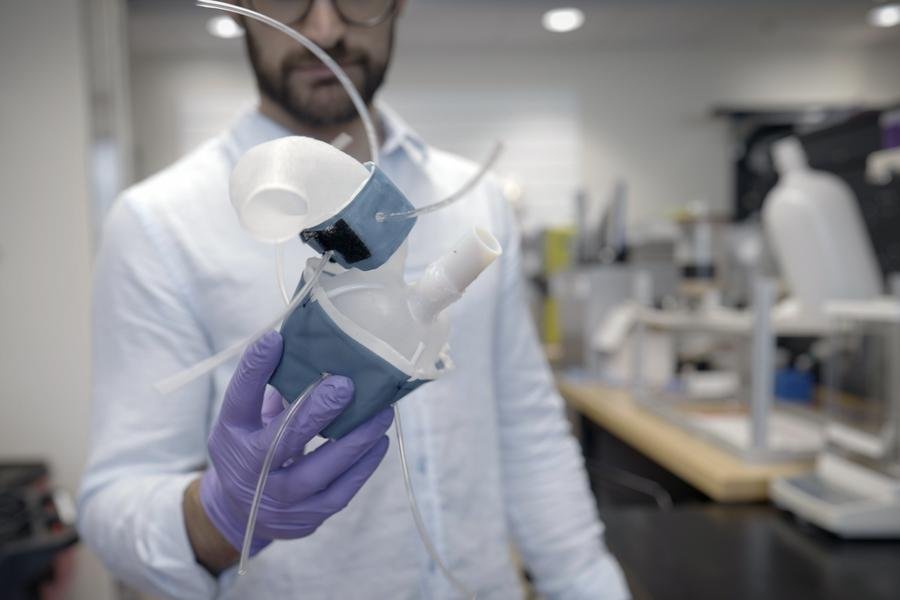In a recent study published in the journal Science RoboticsResearchers at the Massachusetts Institute of Technology (MIT) have published an unprecedented technique for 3D printing a soft and flexible replica of a patient’s heart. The goal is to synchronize the work of the copy with the person’s actual blood pumping (hemodynamics).
Engineers plan to create a custom robotic heart that will help medical staff tailor treatments to each patient’s specific heart shape and function. For the first time, medical images of a patient’s heart have been converted into a three-dimensional computer model that can be printed using polymer-based ink.
The result is a soft, flexible shell in the shape of a heart that is replicated exactly. The same approach can be used to print a copy of the aorta, the main artery responsible for transporting blood from the heart to the rest of the body. The study validates the use of light robotics to reconstruct cardiovascular disease models. – such as aortic stenosis and diastolic dysfunction – with high fidelity.
How were special hearts developed?
It all starts with real patient medical examinations when creating custom hearts. In the study, the researchers used images of 15 patients with aortic stenosis (narrowing of the opening of this heart valve). Echocardiograms of each subject were converted into 3D models of the left ventricle and aorta. With the inputs, the printer created soft shells, which are “casts” of the ventricle and artery.
To simulate the heart’s pumping of blood, the researchers used robotic “sheaths” similar to blood pressure cuffs. These parts were connected to a pneumatic system, connected to other components, and inflated rhythmically with compressed air to contract and expand the robotic “heart.”
The team was able to precisely replicate the flows and pressures of the patients, as well as reproduce the interventions some were subjected to. Copies were printed with surgical correction, as some of the subjects received valve implants to dilate the aorta. In tests with robotic hearts, the valve showed an increase in flow similar to that of real patients.
Source: Tec Mundo
I’m Blaine Morgan, an experienced journalist and writer with over 8 years of experience in the tech industry. My expertise lies in writing about technology news and trends, covering everything from cutting-edge gadgets to emerging software developments. I’ve written for several leading publications including Gadget Onus where I am an author.













